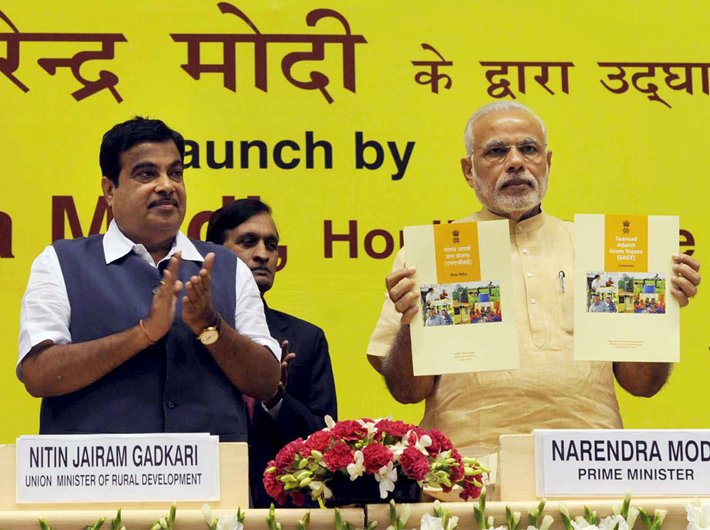Calling it a scheme that would open doors for good politics, PM also appealed all MPs to rise above political line and select villages that could be developed into model village based on a demand-driven model
Turning India’s development model upside down – from a top-down to a bottom-up approach – prime minister Narendra Modi on Saturday launched the Saansad Adarsh Gram Yojana (SAGY) aimed at all-round development of villages.
Calling it a scheme that would open the door for good politics, the prime minister also appealed all MPs to rise above the political line and quickly select villages that could be developed into model village based on a demand-driven model.
The prime minister also pointed out that development in India was often supply-oriented. The Saansad Adarsh Gram Yojana will, however, have three distinct features – it would be demand driven, inspired by society and will be based on people's participation. The Prime Minister said that while democracy and politics were inseparable, damage was often caused by bad politics.
“This scheme would inspire a movement towards good politics, with MPs acting as facilitators and catalytic agents,” he said. “This will not only make people’s participation a key component of development programmes in the country, it will also make the members of parliament (MPs) driving the village project more aware about the issues of governance, the gaps in policies and loopholes in the government process,” Modi said.
The prime minister also pointed out that while various government schemes often worked in isolation the SAGY would help MPs get grass-root level feedback. “By 2016 most of the MPs will have first-hand experience of the bottlenecks in these schemes. This will enable them to demand scraping of bad policies and help the government create better development frameworks, leading to an outcome-oriented approach,” he said.
Modi also pointed out that the scheme was not about money and allocations but about development through a people driven approach that would be guided by the MPs. “MPs must adopt villages and work towards development. My only condition is that the MPs should not select their own village or that of their in-laws,”
He also called upon the states to create similar programme for developing model villages through the active participation of MLAs. “We are nearly 800 MPs. If before 2019 we develop three villages each, we can reach out to nearly 2,500 villages. If the states also join hand to create a similar programme that encourages the legislators to similarly adopt villages, over six thousand more villages could be added in this timeframe. The prime minister also said that if one village is developed in a block, it is also likely to have a viral effect and inspire development in surrounding villages.
Paying tribute to Jayaprakash Narain on his anniversary, the prime minister said the social reformer had talked about Gram Dharma, which was all about the philosophy of a village – something that can be achieved only through people’s participation without which the country cannot realise the dream of Adarsh Gram. He also paid tribute to Nanaji Deshmukh, who had worked towards the concept of village self-sufficiency.
While giving credit to previous governments for their efforts in driving rural development, Modi pointed out despite various initiatives villages in India still lacked basic amenities. “Saansad Adarsh Gram Yojana is an effort to rectify errors in previous schemes. I am not saying that this is the ultimate solution to developing villages. But this is an effort to correct the flaws in previous schemes,” Modi said.

